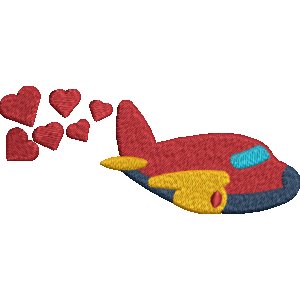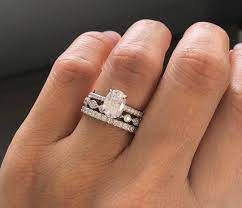Step-by-Step Guide to Embroidering on Unconventional Materials

Embroidery is no longer limited to just fabric. With advancements in embroidery digitizing and machine technology, it is now possible to embroider on leather, wood, plastic, cork, and even metal mesh. However, these unconventional materials require special techniques, stabilizers, and adjustments to achieve professional-quality results.
In this guide, we will provide a step-by-step approach to embroidering on various non-traditional surfaces, ensuring you get stunning and long-lasting designs.
1. Why Embroider on Unconventional Materials?
Embroidering on unique materials has become popular for custom fashion, home décor, and corporate branding. Some key benefits include:
✔ Expanding creative possibilities – Add embroidery to shoes, handbags, and accessories.
✔ Increased durability – Embroidery on leather and plastic lasts longer.
✔ Personalization – Customize products that are not commonly embroidered.
✔ Premium and unique appeal – Embroidery on metal or wood stands out in high-end designs.
However, each material presents its own challenges that require adjustments in embroidery digitizing, stabilizer selection, and machine settings.
2. Essential Tools and Materials for Unconventional Embroidery
Before you start, ensure you have the following:
✔ High-Quality Embroidery Machine – A machine that can handle thicker materials.
✔ Embroidery Digitizing Software – To adjust stitch settings for tough surfaces.
✔ Needles – Titanium-coated or ballpoint needles for tough materials.
✔ Stabilizers – Cut-away, tear-away, wash-away, or adhesive stabilizers.
✔ Hoops or Clamps – Depending on material flexibility.
✔ Thread Type – Polyester or strong metallic thread for durability.
✔ Spray Adhesive or Clips – To hold difficult materials in place.
Proper preparation ensures a smooth embroidery process and prevents fabric distortion.
3. Step-by-Step Guide for Embroidering on Leather
Leather is a thick, non-woven material that requires special handling.
Step 1: Choose the Right Needle
✔ Use a 90/14 or 100/16 titanium needle to penetrate thick leather.
Step 2: Select a Strong Thread
✔ Polyester thread is preferred as it resists friction and wear.
Step 3: Use a Tear-Away Stabilizer
✔ Place a tear-away stabilizer underneath to support the embroidery.
Step 4: Adjust Embroidery Digitizing Settings
✔ Reduce stitch density to prevent needle perforation.
✔ Avoid dense satin stitches; use triple-stitch or bean-stitch for outlines.
Step 5: Hoop the Leather Carefully
✔ Use sticky stabilizer or spray adhesive to avoid hoop marks.
Step 6: Start Embroidering Slowly
✔ Set machine speed to low (600-800 stitches per minute) for precision.
Step 7: Remove Excess Stabilizer
✔ Gently tear off stabilizer without stretching the leather.
4. Step-by-Step Guide for Embroidering on Wood
Wood embroidery is popular for wall art, plaques, and signage.
Step 1: Choose a Thin, Smooth Wood Surface
✔ Basswood, balsa, or plywood work best.
Step 2: Use a Sharp Needle
✔ A sharp titanium-coated needle (100/16) prevents breakage.
Step 3: Stabilize the Surface
✔ Apply sticky stabilizer underneath or use a magnetic hoop.
Step 4: Adjust Embroidery Digitizing for Wood
✔ Increase stitch length (3mm or more) to prevent wood splitting.
✔ Use low-density fill stitches for a clean design.
Step 5: Slow Machine Speed & Monitor Needle Wear
✔ Run the machine at low speed (500-700 SPM) and replace needles if dull.
Step 6: Secure and Finish
✔ Use sandpaper to smooth rough edges around the embroidery.
5. Step-by-Step Guide for Embroidering on Plastic & Vinyl
Plastic and vinyl require heat-sensitive handling to prevent warping.
Step 1: Choose the Right Needle and Thread
✔ Use a sharp 75/11 or 80/12 needle for fine details.
✔ Polyester thread works best to withstand friction.
Step 2: Use an Adhesive Stabilizer
✔ Do NOT hoop plastic directly – Use a sticky stabilizer instead.
Step 3: Adjust Machine Settings
✔ Reduce stitch density to avoid puncturing the material.
✔ Use longer stitches (2.5 - 3mm) for smooth results.
Step 4: Keep Material Cool
✔ If the plastic begins to warp, stop and let it cool before continuing.
Step 5: Remove Excess Stabilizer Carefully
✔ Use a heat-away stabilizer for cleaner results.
6. Step-by-Step Guide for Embroidering on Cork Fabric
Cork fabric is used for bags, wallets, and accessories, requiring gentle handling.
Step 1: Select a Thin Cork Sheet
✔ Use cork fabric (not rigid cork) for best embroidery results.
Step 2: Use a Strong Needle
✔ 90/14 or 100/16 titanium needles work well on cork.
Step 3: Stabilize with Tear-Away or Cut-Away
✔ A tear-away stabilizer prevents distortion while stitching.
Step 4: Adjust Embroidery Digitizing
✔ Reduce stitch density and use light fill stitches.
✔ Avoid dense satin stitches, which can perforate the cork.
Step 5: Embroider at a Slow Speed
✔ Keep machine speed at 600-800 SPM for better control.
7. Best Practices for Embroidering on Unconventional Materials
✔ Test on a Scrap Piece First – Always run a test on a sample.
✔ Use Low-Density Designs – Dense stitches can damage the material.
✔ Monitor Needle Wear – Needles dull quickly on hard surfaces.
✔ Use Proper Hooping Techniques – Some materials require clamps instead of hoops.
✔ Adjust Stitch Density in Embroidery Digitizing – This ensures clean results on tough materials.
Conclusion
Embroidering on unconventional materials opens up a world of creative possibilities. By adjusting machine settings, using the right stabilizers, and optimizing embroidery digitizing, you can successfully embroider on leather, wood, plastic, cork, and more.
FAQs About Embroidering on Unconventional Materials
Q1: Can I embroider on glass or metal?
Embroidery machines cannot stitch on solid glass or metal, but metal mesh or fabric-backed metal can be embroidered with special settings.
Q2: What is the best stabilizer for leather?
A tear-away stabilizer works best, but sticky stabilizers help prevent hoop marks.
Q3: Can I use regular embroidery needles on thick materials?
No, you need heavy-duty titanium needles for tough surfaces.
Q4: What software helps with embroidery digitizing for unique materials?
Programs like Wilcom, Hatch, and Brother PE-Design allow for custom stitch adjustments for different surfaces.
Q5: Why does my embroidery on plastic keep puckering?
Plastic requires light stitches, slow speed, and a sticky stabilizer to prevent distortion.
What's Your Reaction?




















